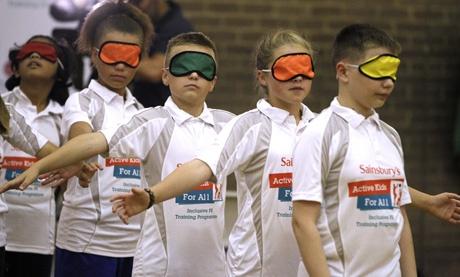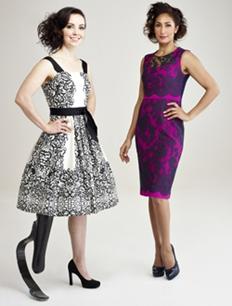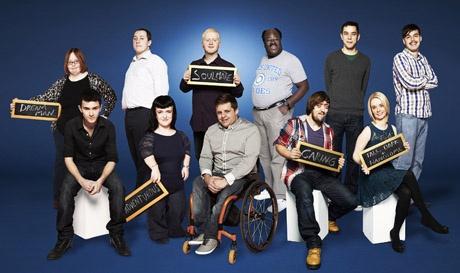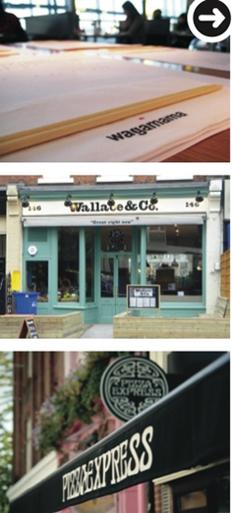A Paralympic legacy
One year on from the London Paralympics many brands continue to underserve disabled people as a consumer base despite their spending being worth over £80bn annually.
Above: Sainsbury’s, which sponsored the Paralympic Games, has also partnered with British Athletics to run the Anniversary Games
Nearly 12 million people in the UK have a disability, according to the Government’s Family Resources Survey. That equates to 19 per cent of the population, or just under one in five.
Looking around, that statistic might seem surprisingly high. According to Tom Hall, director of corporate partnerships at disability charity Scope, that is because people with disabilities remain largely sidelined from the high street as their consumer needs are often not met. “It is always a bit of an eye-opener when we take potential supporters to visit some of our services because they just don’t tend to see disabled people out and about,” he says.
Brands’ failure to address the needs of disabled consumers could be costly, given that the Department for Business, Innovation and Skills estimates that their combined spending could be worth over £80bn annually. But Hall argues that marketers too often view the adjustments brands need to make to attract their business as a burden of legal compliance, rather than as an improvement in the customer journey that could have real commercial benefits.
Since the Paralympics took place in August and September 2012, there have been plenty of positive developments around brands’ inclusivity of disabled people and according to the Office for National Statistics (ONS), more than half the population says their perception of disability improved as a result of the event. Official broadcaster Channel 4 and sponsor Sainsbury’s both extended their parasport commitments to this summer’s Anniversary Games, while retailers Debenhams and Marks & Spencer have both included disabled actors and models in their marketing in the past year.[1][2][3]
We want to show a realistic image to customers, which they are able to relate to. Using models with disabilities is just part of that commitment
Yet according to the ONS, in the past 12 months 41 per cent of disabled people have had difficulty accessing some kind of leisure activity, including 23 per cent who have been deterred from shopping, 21 per cent from going to the cinema, the theatre or a concert and 18 per cent from going to restaurants (See ‘Hard to Swallow’, below)[4] . A short trip down shopping mecca Oxford Street in London indicates that despite increasingly positive perceptions of disability in the UK, facilities and shops are slow to change.
Marketing Week examined a 300-metre stretch of Europe’s busiest shopping street that boasts 20 separate storefronts. Even though they include some brands’ national flagship stores, the results are not encouraging for shoppers with mobility problems. Only 11 of the 20 shops that Marketing Week visited have step- and escalator-free access to all areas (see ‘Restricted Access’, below)[5] .
The results would perhaps be even worse if more nuanced aspects of the shopper experience were included, such as the size of fitting rooms or consumers’ ability to reach products on racks and shelves. Even getting to Oxford Street would be a challenge for most wheelchair users, since the nearest accessible London Underground station is Green Park, nearly a mile away.
Footwear retailer Schuh – whose Oxford Street store does have a customer lift, but one that Marketing Week found is not clearly signed – points out that a number of difficulties may thwart brands’ good intentions. The company claims it makes “every effort” to accommodate customers with disabilities, but its spokesperson suggests creative approaches are sometimes required.
“Our older, multi-floored stores may not have lift access as many are listed buildings, making renovation for this difficult, however within these stores provisions have been made for customers with disabilities. We have in-store kiosks that can be used to browse the entire Schuh range, and when the customer has selected their shoes a member of staff will bring them to wherever is most convenient for them.”

Sainsbury’s Active Kids for All scheme builds on the brand’s Paralympic sponsorship
However, serving the UK’s 12 million disabled consumers is not only about providing wheelchair access; just 900,000 people in England and Wales use them. Other impairments can range from blindness to communication problems, as well as cognitive disorders that affect learning, concentration or memory.
Office manager at accessible boating company Wetwheels, Angus McKechnie, who has cerebral palsy, says he is often disadvantaged by the service at coffee shops: “I don’t always get help carrying the tray when I need it most. It seems that quite often, staff are trained to be more of a production line than to offer customer service.”
Indeed, many of the adjustments brands could make to ensure their products, services and marketing do not exclude people with impairments would be far simpler and cheaper to achieve than installing lifts in stores, and would have just as profound an impact. Many could also be fairly easily built into research and design processes at the start of the product cycle, as Scope’s Hall explains.
“Accessibility can be simple things like making sure people can read your signage. There are lots of elements to accessibility that companies could work on, which could be excluding certain customers. One of the best ways for firms to do that would be to do product or customer journey testing with disabled customers.”
An example of an unnecessary barrier that could easily be removed with a bit of planning are enquiry or payment desks that are placed too high, he says. But brands could also make more effort to create products that are desirable and usable for both disabled and non-disabled people, thus reaching another 12 million potential consumers – 20 million if you include disabled people’s family members, who often buy products on their behalf, according to Scope.

Paralympian Stefanie Reid modelled for Debenhams’ spring/summer collection
“Topshop could, for example, be working with a disabled designer to design clothes that work for people in wheelchairs. They could steal a march on other clothes designers and high street retailers that don’t think of those people as a target market,” says Hall.
At Channel 4, chief marketing officer Dan Brooke echoes Hall’s comments, claiming that companies would be better able to reach disabled consumers if disabled employees had a central role in product strategy. Channel 4 was official UK broadcaster of the Paralympics and has since committed to showing three high-profile parasport events this summer. It has also commissioned several other disability-related programmes such as comedy show The Last Leg and documentary The Undateables, which follows disabled people who sign up to a specialist dating service.
Brooke says: “We found that during the Paralympics, all the things that went well, whether they were the real-life events or the broadcasts, were always better when disabled people were centrally involved. I think [Paralympics organising committee] Locog would say the same thing.
“In the world of business, a big part of replicating that would be encouraging employers to look at disabled people as a rich source of talent, in a way that perhaps hasn’t existed in the past.”
Brooke believes that the Paralympics has created fundamental change in the way disabled people are both perceived and treated in UK society generally, although he acknowledges that such changes are, by nature, slow to happen. Statistics produced by the ONS between 2005 and 2011 suggest improvements were made in that time regarding overall access to goods and services, but the pace of change was sluggish and relatively high proportions of people still report difficulties obtaining them.
It is also likely that much of the improvement is a result of increased availability of online commerce. However, relying solely on the internet to boost disabled consumers’ access to brands’ offerings would be unwise. ONS data shows nearly a third of disabled adults have never used the internet, compared to 9 per cent of non-disabled adults.
Furthermore, Wetwheels’ McKechnie argues that many websites are not fully accessible: “Even though there are rules governing it, I am still surprised that a number of websites aren’t adapted so disabled people can extract information from them, almost in some cases barring them from their online [services].”
Sainsbury’s marketing director Sarah Warby likens brands’ efforts to adapt their offerings for disabled consumers to “painting the Forth Bridge” - a job that never ends.
“Of course you go through the [legal] compliance and get all the basics right, but it’s really important for us that we don’t stand still. There’s always more to do – there’s always a ramp somewhere that’s missing or a sign that isn’t legible enough. There’s always something to improve.”
One aspect of marketing to disabled people that Warby, Channel 4’s Brooke and Scope’s Hall all agree on is that more portrayals of disabled people in advertising and the media are needed. It is difficult to measure progress in this area, since none of the advertising industry bodies that Marketing Week contacted – ISBA, the IPA, the AA and WARC – hold any data against which to set a benchmark.
Nonetheless, Brooke argues that despite Channel 4’s focus on bringing disability from the margins into the mainstream, there is a dearth of representation on television: “In the process of appealing to wide audiences, one of the ways to do that is by reflecting society, and it’s not that you would think disabled people don’t exist by watching a night’s worth of TV across all the channels, but they are not 10 to 20 per cent of people on TV even though that is true in the wider world.”

Channel 4’s The Undateables has been a ratings success and a third series has been commissioned
Warby at Sainsbury’s acknowledges that it can be difficult to get the tone right when pushing for increased representation of disability. Marketers can be accused of tokenism or being patronising, she says. When Channel 4 announced its first series of The Undateables in 2012, the programme’s title was heavily criticised by newspapers and Twitter users, but the show has been recommissioned for a third series, after peaking with 4 million viewers.
Prominent advertisers have also used disabled models and actors in their marketing in the past year. Marks & Spencer featured four-year-old Seb White, who has Down’s Syndrome, in its 2012 Christmas TV ad while Debenhams employed Paralympian Stefanie Reid to model its spring/summer 2013 collection in April.
Senior PR manager at Debenhams, Michelle Dowdall, says: “We want to show a realistic image to our customers, which they are able to relate to. Using models with disabilities is simply a part of this commitment. We hope that our inclusivity campaigns will encourage the rest of the high street to sit up and take note, and hopefully attitudes will change and we will see more difference in the future.”
However, as with the adjustments brands can make to their products and services, even incidental changes in their marketing communications could have substantial positive effects while entailing little commercial risk. Marketers do not need to position their offerings especially for disabled people at the expense of the mass market, says Scope’s Hall; they could simply make more effort not to exclude them.
“If something is targeted around disability, it can often be positioned negatively, rather than showing a disabled person achieving their potential. But you can imagine having Paralympians in advertising where the disability is not relevant. That’s what we would encourage brands to think of doing – just as with taking a diversity approach within advertising along racial lines.
“It would say a lot for the brand, for example, if a supermarket, rather than featuring a disabled person as a lead character in an advert, had people in the background who happen to be disabled and it’s noticeable that they’re in the store just shopping.”
Marketers perhaps believe that making their brands more accessible to disabled people means creating specialist products or carrying out costly building works. But rather than seeing disabled people as a narrow niche, there is an opportunity to view this diverse group as a segment of the mass market that is at present under-served, but which can easily be included through giving more attention to the customer journey.
Ultimately, even though perceptions of disability are more positive than before the Paralympics, many marketers appear not to have appreciated one of the key messages that UK society in general has taken out of the Games. As Sainsbury’s Warby points out, neither people nor brands will do any harm by “being honest and trying to do the right thing”.
And if there’s any uncertainty about what disabled consumers want, she offers a simple solution: “If you don’t know, just ask.”
Restricted access
According to the Equality Act 2010, which has replaced the Disability Discrimination Act 1995, service providers have a duty to make “reasonable adjustments” to remove barriers to people with disabilities. On top of this, the Equality and Human Rights Commission says they should provide clear notices where services for disabled people exist.
But in nine of the 20 stores on a 300-metre stretch of London’s Oxford Street that was examined by Marketing Week, a range of barriers were observed. Where brands responded to our assessment, their comments are included.
Aldo, American Apparel, La Senza
Shoe store Aldo, fashion retailer American Apparel and lingerie retailer La Senza all have two floors, with the lower level apparently reachable only by stairs and no alternative access marked inside the store. At Aldo and American Apparel, men with mobility problems would be disadvantaged since the lower floors hold men’s products, and in the latter store it’s also where the fitting rooms are located.
Global
This souvenir and luggage shop is on one floor, but the back portion where suitcases are displayed cannot be accessed without going up two steps. No alternative access is marked in-store.
Moss Bros Hire/The Suit Company
Of the men’s suit retailer’s three floors, it is only clear that the ground floor can be obviously accessed in a wheelchair. Two steep and narrow staircases lead to the other levels.
Urban Outfitters
The fashion retailer’s four main floors are accessible by a lift, but there are three mezzanine levels between flights of stairs that the lift cannot reach.
Schuh
At first glance, stairs appear to be the only access to the lower of the two floors. In fact there is a lift, although it is not visible without proceeding through a doorway marked as the emergency exit. A Schuh spokesperson says: “We do have a customer lift in our Oxford Street store, however we appreciate that this is not obviously signposted and will now take steps to remedy this.”
Topshop
The majority of the store is accessible by lift, but a small ‘Brands’ section is raised on a wooden platform, which a wheelchair user would be unable to access without assistance.
Uniqlo
Although there is a customer lift, when tested it would only allow customers to access the first and ground floors and not the lower floor where the men’s section is located. On the day Marketing Week visited, a man with an amputated leg was using stairs on crutches to get from the menswear department to the ground floor.
Uniqlo says it trains staff to find and bring clothes to customers and, if necessary, would direct people to its store at 311 Oxford Street, which has lift access to all floors.
Back to the top
[6]
Hard to swallow
Disabilities are not all related to mobility. Difficulties with swallowing and eating, known medically as dysphagia, potentially affect 5 per cent of the population and can exclude people from everyday consumer activites such as enjoying a meal out. Food must be blended to a puree consistency to avoid a risk of choking.
Many restaurants create dishes specially for vegetarians, who comprise just 2 per cent of people in the UK, according to the Office for National Statistics, so Marketing Week investigated whether restaurants make similar menu adjustments to cater for people with eating impairments.
One of these, Wagamama, says it is developing a policy as a result of our enquiries. A spokesperson says: “We are in the process of ensuring that our restaurants have steps in place to meet the needs of customers with dysphagia.”
The remaining results are mixed. Marketing Week contacted a selection of high street restaurant branches in south-west London and their head offices to ask whether kitchen staff would be able to puree menu items, and whether they would allow disabled customers or their carers to use their own appliances to do it.

Prezzo
Prezzo answers ‘no’ to both questions. The local branch’s response is consistent with the central office’s. The main reason is that the kitchen lacks the equipment.
JD Wetherspoon
The pub we contacted initially said that, since it does not have a blender, customers would be welcome to bring one, which the kitchen would use to puree the food. But its head office says its pubs would not be allowed to do this.
Pizza Express
The local branch says blending food is not a standard of Pizza Express and it possesses no facilities or equipment, but would “try [its] best” to accommodate customers. Pizza Express’s central office did not respond to a request for comment.
Nando’s
The Nando’s branch we got in touch with says it has no blender and would not allow customers to use their own. The Nando’s marketing team acknowledged our enquiry but made no comment.
Carluccio’s
The restaurant we contacted says there would be no problem accommodating people with dysphagia. The head office did not respond to confirm any central policy.
Wallace & Co
Wallace & Co, owned by BBC MasterChef presenter Gregg Wallace, says it serves people with many different requirements and that it would be no problem to do so for people with dysphagia.
Wagamama
As subsequently confirmed by the head office, the south-west London branch we contacted says it would do everything it can to meet the needs of people with dysphagia.
The Royal College of Speech and Language Therapists, the expert professional body for dysphagia treatment, says of Marketing Week’s findings: “Losing the ability to eat is socially very isolating and we have heard of restaurants objecting to individuals bringing in their own modified food so that they can eat with friends and relatives.
“Our advice to any commercial organisation aiming to provide modified food would be to ask for expert help from speech and language therapists or dieticians.”
Back to the top[7]References
- ^ Sainsbury’s (www.marketingweek.co.uk)
- ^ Marks & Spencer (www.marketingweek.co.uk)
- ^ in their marketing in the past year. (www.marketingweek.co.uk)
- ^ (See ‘Hard to Swallow’, below) (www.marketingweek.co.uk)
- ^ (see ‘Restricted Access’, below) (www.marketingweek.co.uk)
- ^ Back to the top (www.marketingweek.co.uk)
- ^ Back to the top (www.marketingweek.co.uk)









